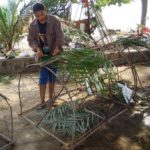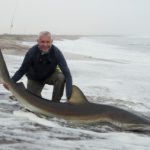Stilt fishing, locally known as ‘Riti Panna’, was an essential and unique fishing technique on the southern coast of Sri Lanka between World War II and the 2004 tsunami. After this period, this coast was developed into a major tourist area, and stilt fishing was turned into a photo-op activity, romanticizing stilt fishermen against a sunset backdrop.
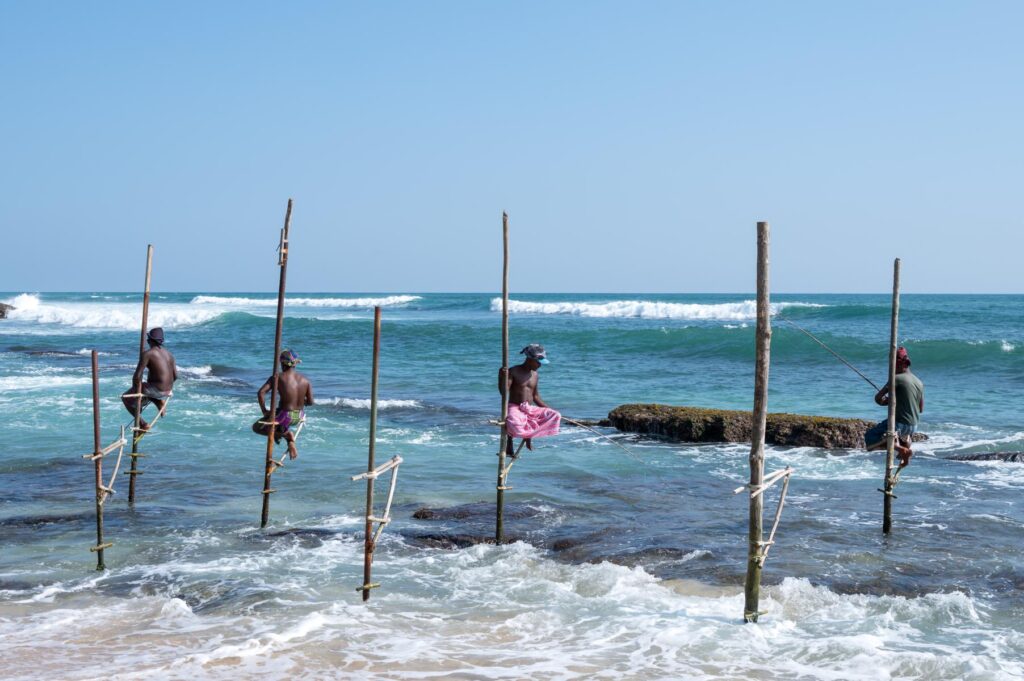
History of stilt fishing
During World War II, food shortages occurred on the south coast of Sri Lanka due to the influx of British troops and overfishing. Some innovative fishermen sought additional ways to fish and used the wreckage of capsized ships and downed aircraft as makeshift angling platforms. Over time, they refined their technique and began erecting wooden stilts in the reefs along the southern shore, between the towns of Unawatuna and Weligama. Every reef in this area was allocated to a village or a group of villages to avoid possible disputes between fishermen.
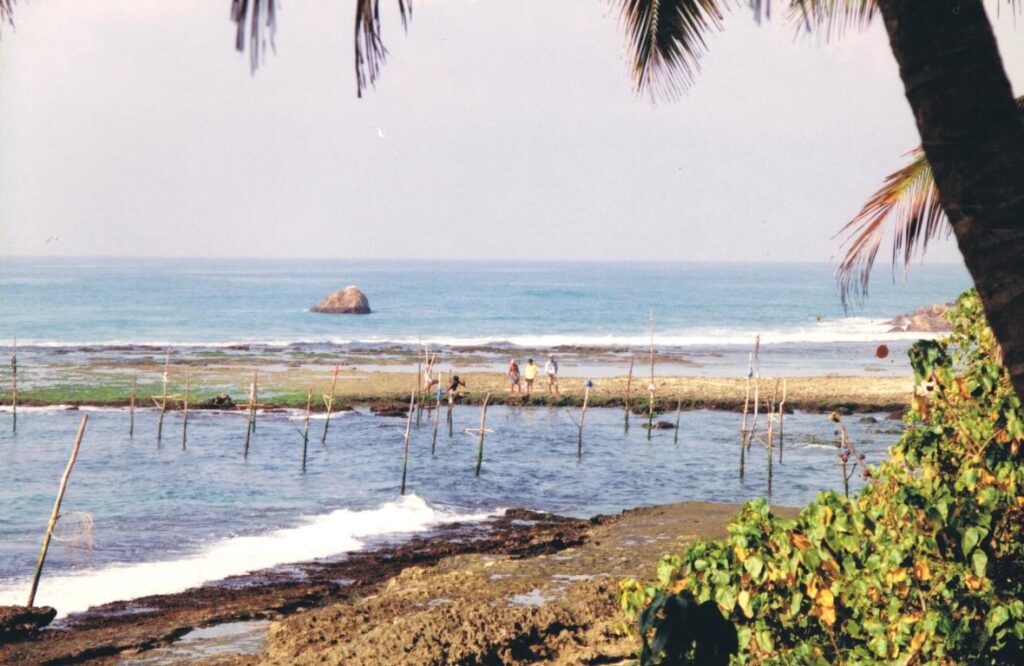
In 1995, the author observed these stilt fishermen near Weligama, as shown in his photo above. Every morning and evening, the stilt fishers went to their stilts and fished for the livelihood of their families.
Tsunami 2004
This lasted until Dec 26th, 2004. When the Indian Ocean earthquake occurred, a tsunami struck the southern coast of Sri Lanka, destroying everything in its path, from villages and coconut groves to the entire fleet of fishing boats and even altering the coastline’s shape. This catastrophe marked the end of stilt fishing as a life-sustaining artisanal fishing technique on the southern coast of Sri Lanka; the ensuing reestablishment of this fishing technique is now just a matter of folklore.
There are multiple reasons for this change. One is that most of the traditional fishers are among the 35,400 deaths who perished at the time when the tsunami hit the coastline. Knowledge was lost, and coral reefs and rock formations were broken, completely changing the topography of the shallow inlets. Then, there was a glut of fishing boats, received free of charge from international donors. So, it was no longer necessary to balance on flimsy poles above the water, hoping to catch some fingerlings, barely enough to feed a family.
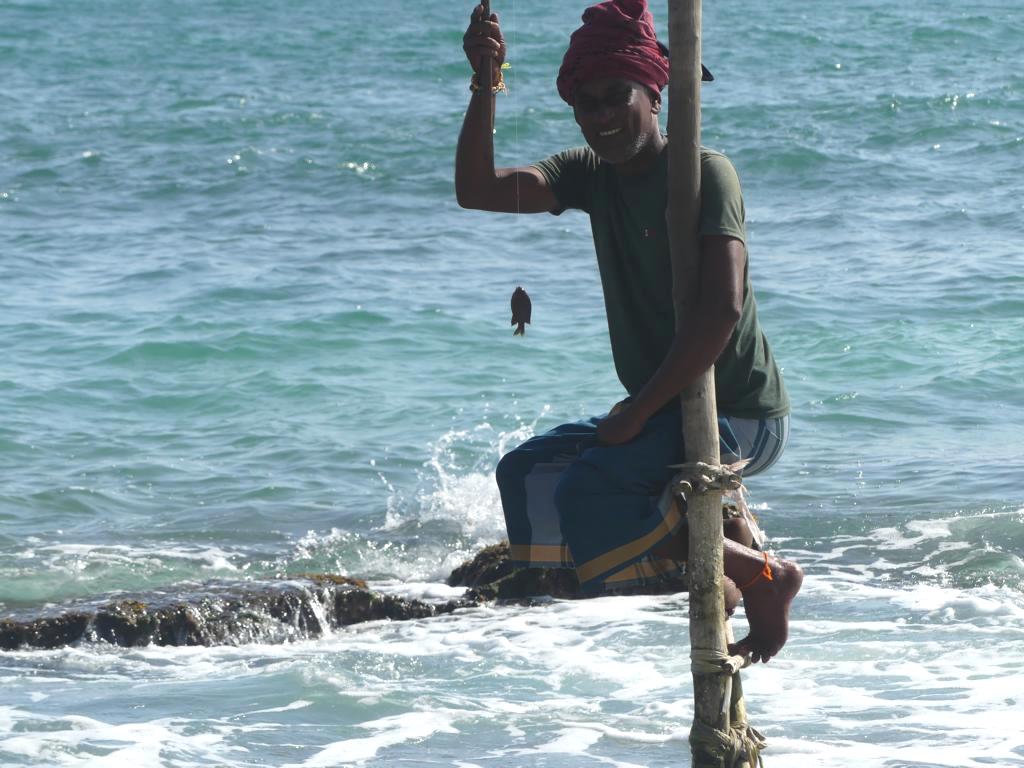
However, tourism was picking up in the aftermath, and – as every time has its opportunity – many fishermen and imposters began reviving the old stilt-fishing technique to charge tourists. And when Steve McCurry’s 1995 photos of the fishermen of Weligama became more widely known, the business model of acting in the sunset by them took off.
Target fish species
In former times, the two main species targeted were the Blue-stripe herring (Herklotsichthys quadrimaculatus) and Bigeye Scad (Selar crumenophthalmus), a small mackerel species known as ‘Bolla’ (බොල්ලා) in Sri Lanka. Both are schooling fish that move in and out of shallow shores at dusk and dawn to feed. Main by-catch were Spotted sardines (Amblygaster sirm), Indian mackerels (Rastrelliger kanagurta), Mullet (Mugil cephalus), and Rabbitfish (Siganus spp.).
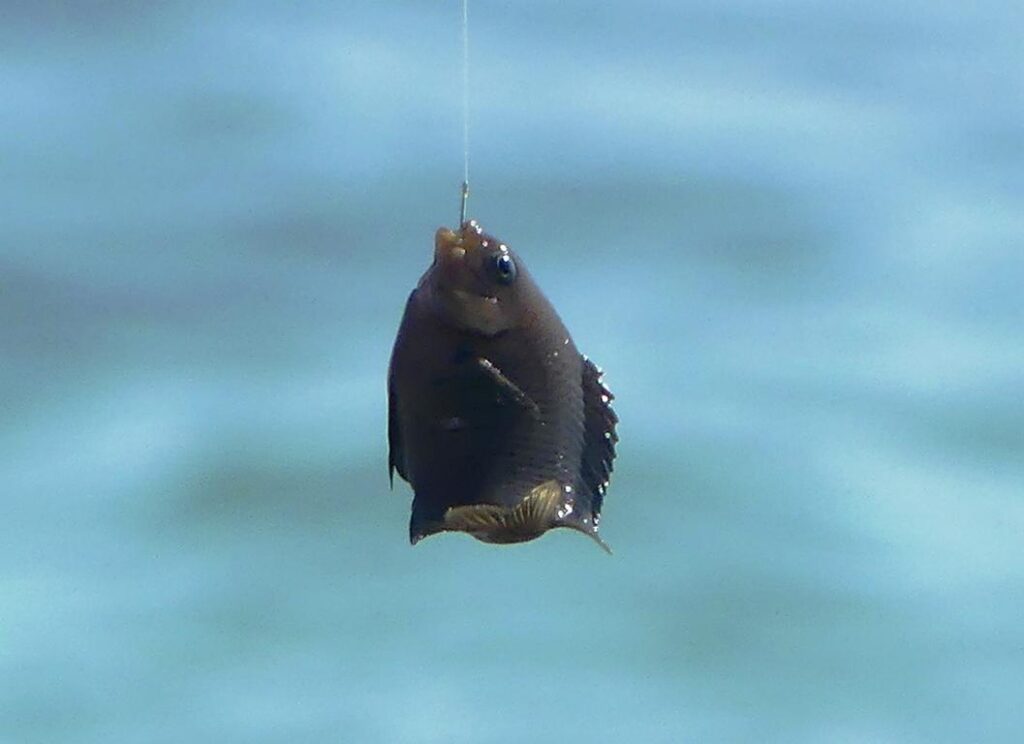
When we were watching our actors pretending to be fishermen at Koggala, one of them caught a Black Damselfish (Neoglyphidodon melas). This impostor on the stilt was quite surprised, having caught a suicidal fish on his rusty hook. However, Damselfish are not a mainstay of the culinary world.
Stilt designs
There are three different types of stilt designs. All three of them use seawater-resistant wood, which is often from ‘Havari Nuga’ trees (Alstonia macrophylla). This wood is preferred by fishermen for its durability, light weight, and long, straight trunk. The distance between neighboring stilts is always such that the fishing lines used on each pole will not entangle with the neighboring lines.
Stilt design for one fisherman
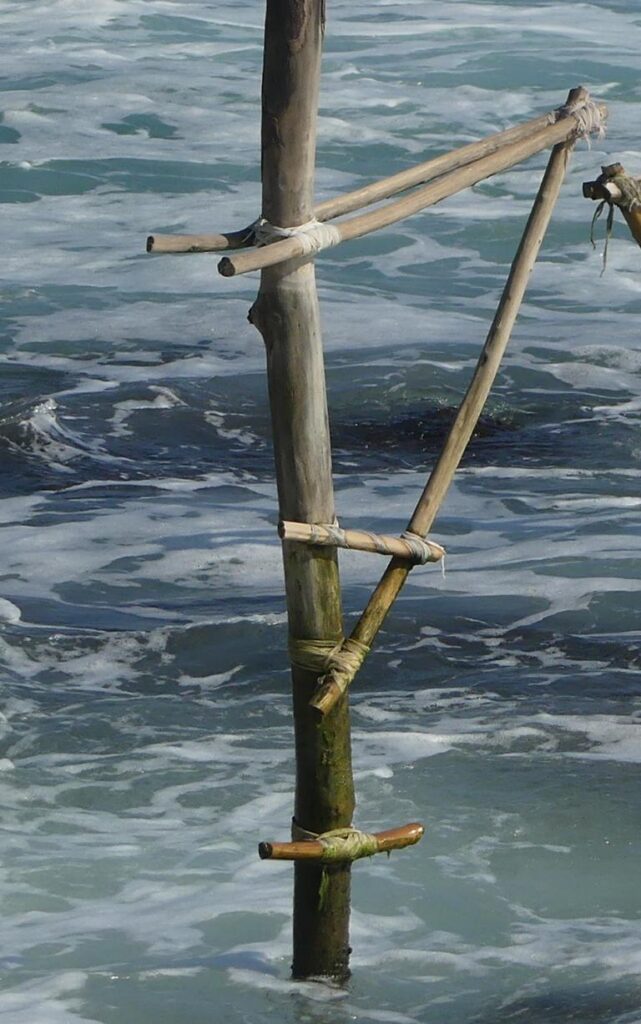
This is the most common design. On a 4-meter-long upright pole, two cross-sticks will be bound, which form the future seat for the fisherman. These two sticks will be supported by a sturdy, bow-shaped stick, which redirects the person’s weight into the wooden pole. One or two cross-sticks on the pole below the seat will enable the person to climb onto this contraption. This design can be carried out by the fisherman and erected again at various locations, as can be seen in the picture in this link. These movable stilts are valuable fishing tools that will be passed down from one generation to the next.
Double-fisherman design
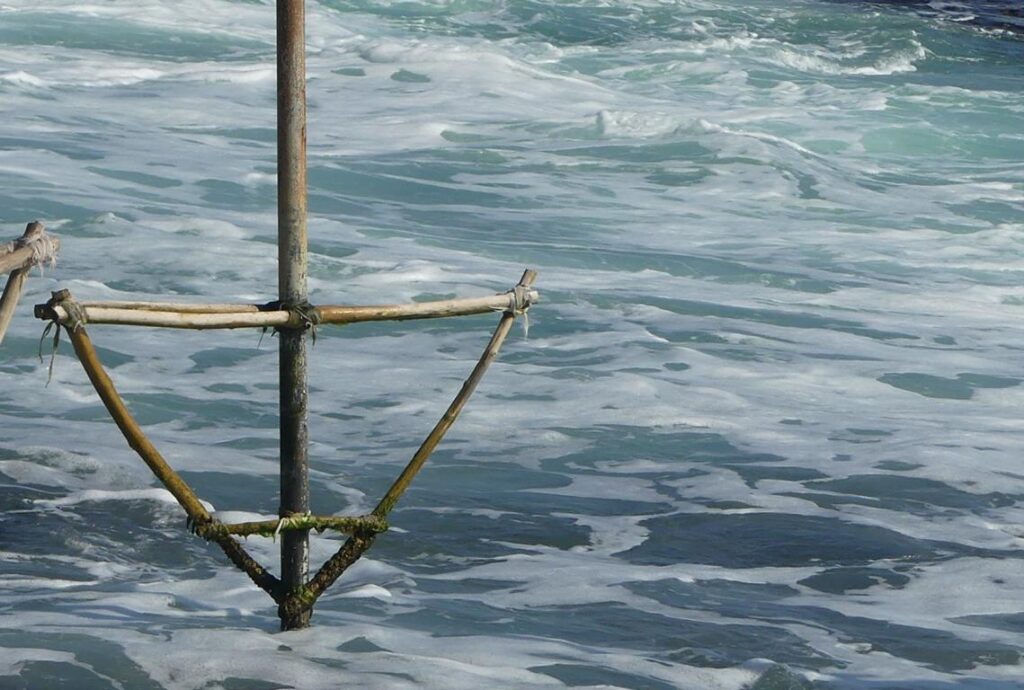
Two fishermen can use a single stilt in a design, locally known as a ‘Wata’, which is depicted in the picture above. Due to the higher weight it must carry, the pole requires a secure foundation. It is therefore mainly kept in the same place.
Irregular fishing platforms
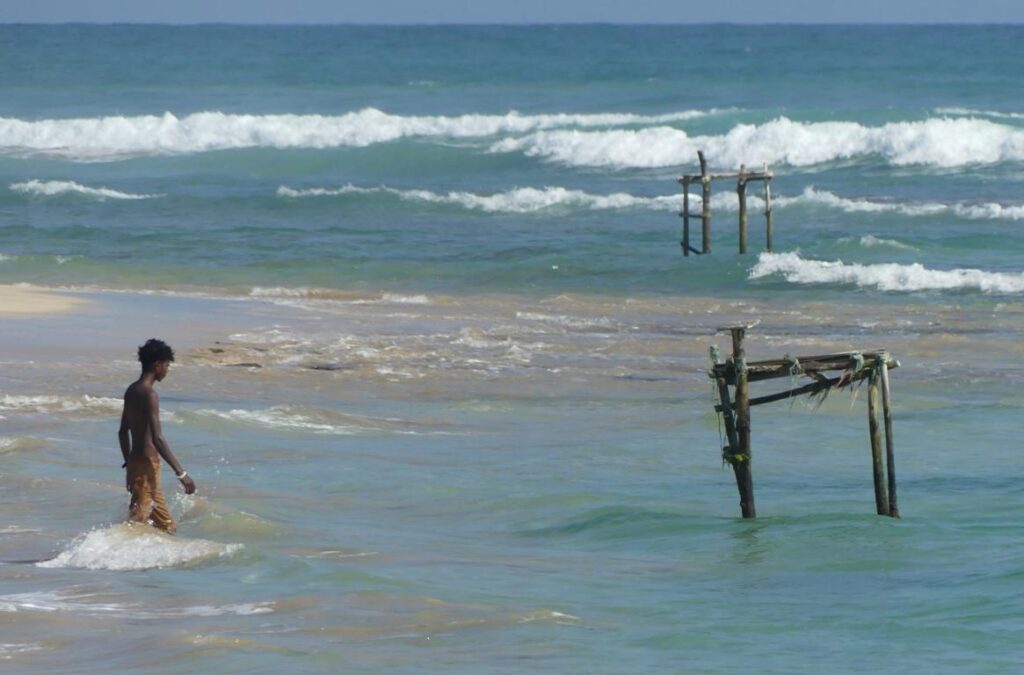
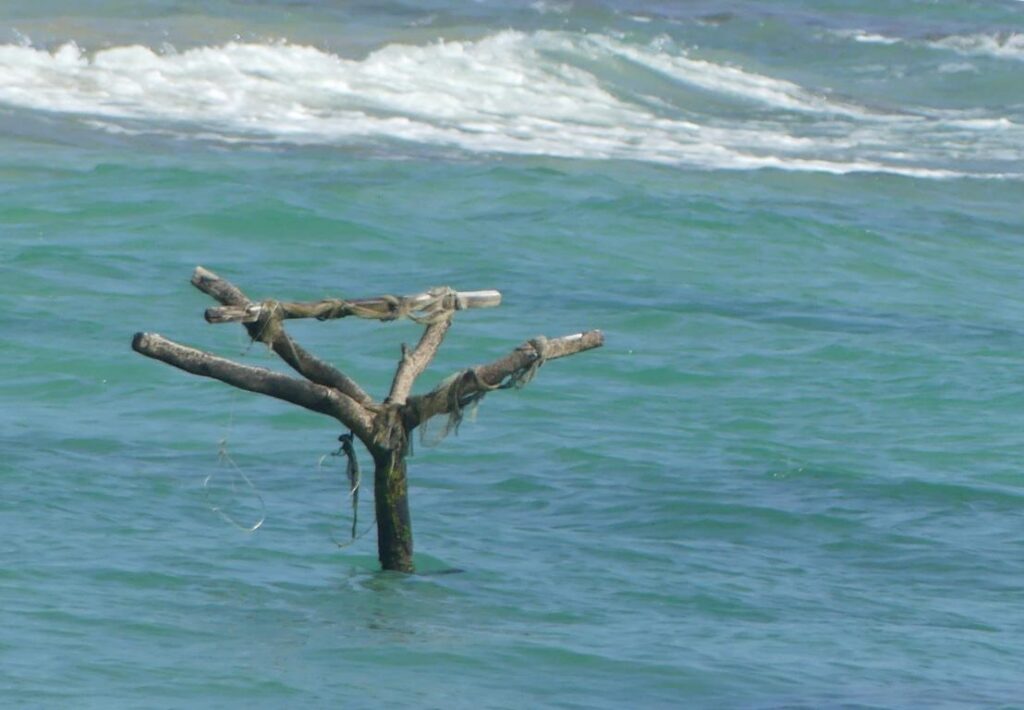
Fishing platforms, which are not necessarily stilts, come in various designs. These can be four or fewer-legged versions, or even a tree trunk will be stuck crown-down into the substrate.
Fishing tackle
Only angling is possible from the perch on the stilt. Net fishing or other methods are not feasible due to the unstable seating platform.
Fishing rods
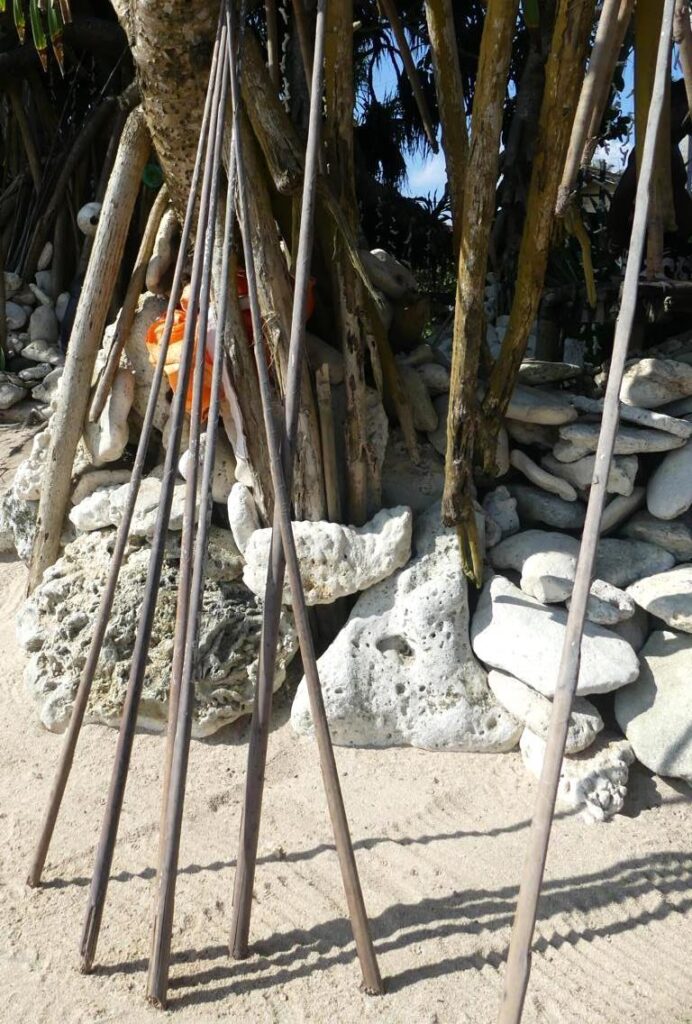
The fishing rods are made of the rachis (mid-ribs) of Fishtail palms (Caryota urens). This palm is called ‘Kithul (කිතුල්)’, ‘Treakle palm’, or ‘Jaggery palm’ in Sri Lanka. The leaflets will be removed, and the rachis will be dried until ready for use. This results in a straight, lightweight, yet sturdy rod. It is even lighter than bamboo.
Hook, line, and sinker
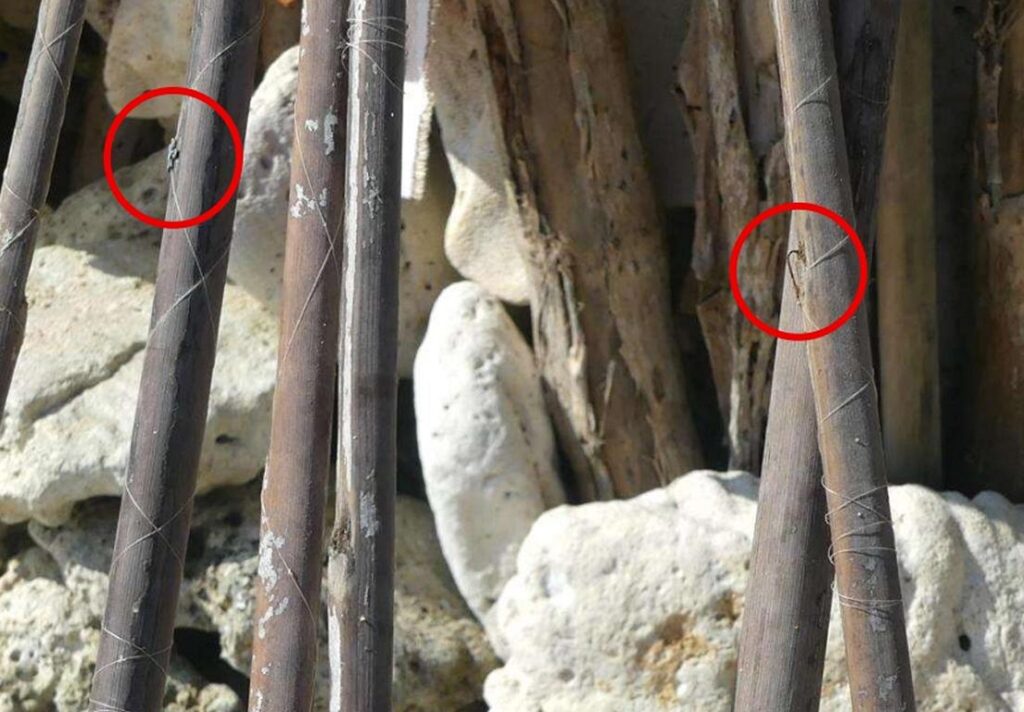
Straight-shanked No. 4-sized hooks are used, which are directly knotted on a light monofilament nylon line. A small lead sinker of undefined size will be directly squashed onto the line at about 1 foot (about 30 cm) behind the hook.
Bait
The people who portrayed fishermen, whom we saw in July 2025 at Koggala, did not use any bait on their hooks. Unfortunately, in 1995, when I observed real stilt fishermen, I did not pay attention to this topic. But I cannot imagine that the target fish (herrings and mackerel) would bite a hook without natural bait or at least some feathers. I would have used small pieces of squid, crabs, fish, or mollusks on the hook.
Holding bag
In order not to leave the perch when having caught a fish, a holding bag will be either attached to the pole or the fisherman himself.
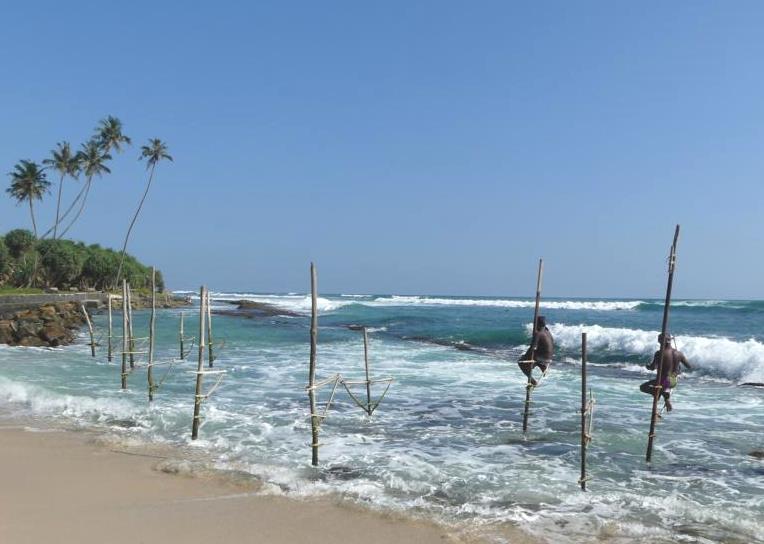
Fishing technique
Stilt fishing is mainly done during the Yala monsoon season, from May to August each year. During that time, it is dangerous to go by boat to the sea, and inshore fishing activities are preferred.
Fishing is typically done in the morning before dawn, until the sun becomes too hot. This occurred between approximately 5:00 and 9:00 am. And in the late afternoon, when the temperature dropped to about half an hour after sunset. Which was from about 4:00 to 7:00 pm. At these times, schooling fish swim shoreward for feeding before returning to the sea.
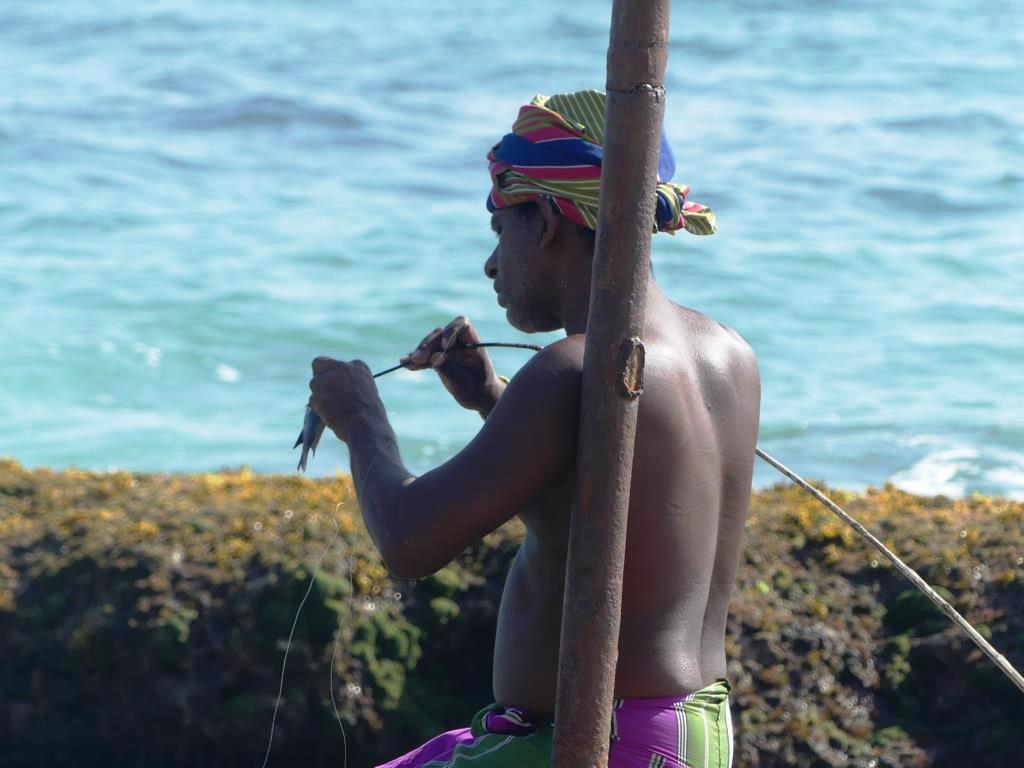
After climbing to the perch, the fisherman clutches the pole with one hand for balance and uses the other hand for angling. His feet are resting on the bow-shaped stick.
The fisherman sits about two meters above the water and will not be regarded as a direct threat by the fish below if he remains still. He is thus required to sit in the same position, quiet and motionless, for a long time, which will numb his backside, thighs, and feet.
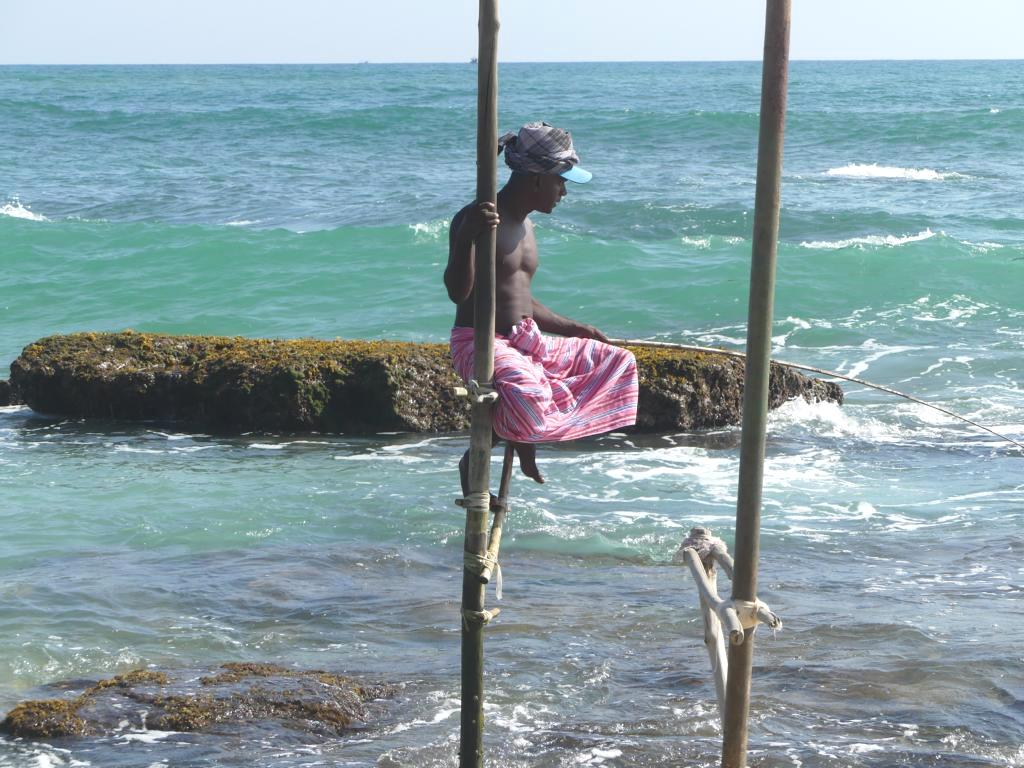
Current situation
At the time of writing this article (July 2025), stilt fishing has lost its practical purpose and is now primarily used as a photo-op activity for cash generation. Tour operators and individual tourists can hire a certain number of ‘fishermen’ for a fee, who will crawl onto their stilts and pretend to do some fishing. These actors will even allow tourists to climb their stands and get photographed by other tourists, for an additional fee.
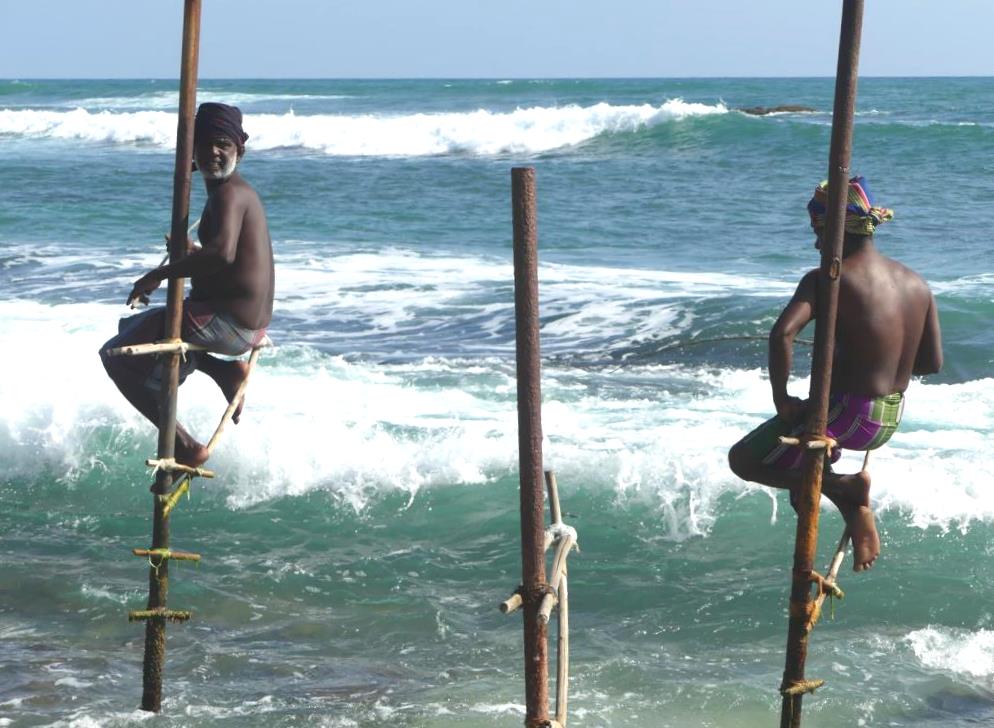
When the author reluctantly paid for four persons acting as ‘fishermen’ for this article, a huge coach suddenly appeared and disgorged about 40 tourists. These were running towards the stilts, shouting noisily and posing in every possible and comical position. This was enough for me (and my wife) to flee the scene.
We intended to document and present a unique fishing method, but it ultimately ended in considerable frustration. This experience had nothing to do with fishing anymore. Perhaps Instagrammers and TikTokers will like this artificially built ‘raw nature experience’, but we don’t.
Lessons learned about stilt fishing in Sri Lanka:
- Stilt fishing is a fishing technique endemic and unique to the southern coast of Sri Lanka.
- It was an essential fishing technique from WWII until the tsunami hit in 2004.
- Small schooling fish, like herrings and mackerel, are caught.
- Nowadays, stilt fishing has lost its practical purpose and turned into a tourist attraction.
.



